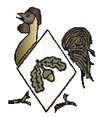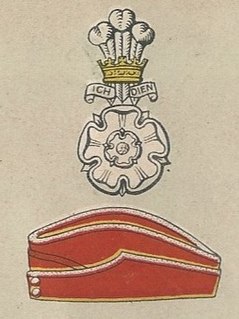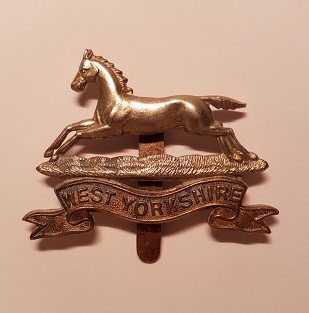
The 17th (Northern) Division was an infantry division of the British Army, a Kitchener's Army formation raised during the Great War.

The 21st Division was an infantry division of the British Army during World War I, raised in September 1914 by men volunteering for Lord Kitchener's New Armies. The division moved to France in September 1915 and served on the Western Front for the duration of the First World War.

The 56th Infantry Brigade was an infantry brigade of the British Army that saw active service in both World War I and World War II.
The 32nd Infantry Brigade was an infantry brigade formation of the British Army that saw active service during both World War I and World War II.
The 18th Infantry Brigade was an infantry brigade of the British Army that saw active service during World War I and World War II.

The 40th Division was an infantry division of the British Army active during World War I, where it served on the Western Front. It was a division of Lord Kitchener's New Army volunteers, mostly "bantam" recruits of below regulation height. It was later briefly reformed as a fictional deception formation in World War II, and during the early years of the Cold War was recreated a third time to garrison Hong Kong.

The 146th Infantry Brigade was an infantry brigade formation of the British Army, part of the Territorial Force with the 49th Infantry Division. The brigade saw active service during both World War I and World War II, and during the early part of the Cold War. The brigade was active from 1908 until 1967 when it was finally disbanded.

The Yorkshire Hussars was a unit of the British Army formed in 1794. The regiment was formed as volunteer cavalry in 1794 during the French Revolutionary Wars. It was converted to an armoured role during the Second World War. In 1956, it merged with two other Yorkshire yeomanry regiments to form the Queen's Own Yorkshire Yeomanry. Its lineage is continued today by the Queen's Own Yeomanry.
The 150th Brigade was a formation of the Territorial Force of the British Army. It was assigned to the 50th (Northumbrian) Division and served on the Western Front during the First World War.

The 35th Brigade was an infantry brigade formation of the British Army that saw active service in both World War I and World War II.
The 62nd Brigade was a formation of the British Army. It was raised as part of the new army also known as Kitchener's Army and assigned to the 21st Division and served on the Western Front during the First World War. Brigadier-General George Gater succeeded Brigadier-General C G Rawling as commander of the brigade in November 1917.
The 63rd Brigade was a formation of the British Army. It was raised as part of the new army also known as Kitchener's Army and assigned to the 21st Division and served on the Western Front during the First World War. In July 1916 the brigade was transferred to the 37th Division.
The 64th Brigade was a formation of the British Army. It was raised as part of the new army also known as Kitchener's Army and assigned to the 21st Division and served on the Western Front during the First World War.
The 83rd Brigade was an infantry brigade formation of the British Army. It was originally formed from regular army battalions serving away from home in the British Empire. It was assigned to the 28th Division and served on the Western Front and the Macedonian Front during World War I. The Brigade was temporarily attached to the 5th Division between March and April 1915.
The 93rd Brigade was a formation of the British Army during the First World War. It was raised as part of the new army also known as Kitchener's Army and assigned to the 31st Division. The brigade served in Egypt defending the Suez Canal between January and March 1916, and then left for the Western Front. In April 1981 after suffering heavy casualties the 93rd and 92nd Brigades, were amalgamated for two days, and known as the 92nd Composite Brigade.
The 97th Brigade was a formation of the British Army during the First World War. It was raised as part of the new army also known as Kitchener's Army and assigned to the 32nd Division. The brigade served on the Western Front.
The 185th Brigade was a formation of the Territorial Force of the British Army. It was assigned to the 62nd Division and served on the Western Front during the First World War.
The 106th Brigade was a formation of the British Army during the First World War. It was raised as part of the new army also known as Kitchener's Army and assigned to the 35th Division. The brigade served on the Western Front.












